Do you have a question about the Vespa S 125 ie e and is the answer not in the manual?
Identifies key controls and displays on the handlebar and dashboard.
Specifics of the speedometer, fuel gauge, and clock.
Operation of the key switch and steering locking mechanism.
Operation of turn signal switches and the horn button.
Operation of headlight switches and the engine start button.
Procedures for accessing the fuel tank and opening the saddle.
Information on vehicle keys and identification numbers.
How to use the bag clip and helmet anti-theft device.
Essential checks before riding and safe refuelling procedures.
Maintaining tyre inflation and adjusting suspension.
Procedures for starting the engine and initial running-in.
Troubleshooting for difficult engine starting.
How to stop the engine and use the anti-theft ring.
Information on the catalytic silencer and using the stand.
Safe driving tips and automatic transmission operation.
Checking, topping up, and changing engine oil.
Checking rear hub oil and tyre condition.
Spark plug removal and inspection.
Removing and cleaning/replacing the air filter.
Checking and topping up brake fluid.
Battery care, installation, and fuse system.
Servicing headlights and front indicators.
Servicing taillight, rear indicators, and mirrors.
Adjusting front disc and rear drum brakes.
Handling tyre punctures and preparing for storage.
Washing the vehicle and solving common issues.
Detailed specifications for 125cc and 150cc engines.
Chassis, suspension, brakes, wheels, and weight data.
Fluid volumes and included tools.
Recommendations for using original Piaggio parts.
Table of scheduled service tasks.
List of approved fluids and lubricants.
Identifies key controls and displays on the handlebar and dashboard.
Specifics of the speedometer, fuel gauge, and clock.
Operation of the key switch and steering locking mechanism.
Operation of turn signal switches and the horn button.
Operation of headlight switches and the engine start button.
Procedures for accessing the fuel tank and opening the saddle.
Information on vehicle keys and identification numbers.
How to use the bag clip and helmet anti-theft device.
Essential checks before riding and safe refuelling procedures.
Maintaining tyre inflation and adjusting suspension.
Procedures for starting the engine and initial running-in.
Troubleshooting for difficult engine starting.
How to stop the engine and use the anti-theft ring.
Information on the catalytic silencer and using the stand.
Safe driving tips and automatic transmission operation.
Checking, topping up, and changing engine oil.
Checking rear hub oil and tyre condition.
Spark plug removal and inspection.
Removing and cleaning/replacing the air filter.
Checking and topping up brake fluid.
Battery care, installation, and fuse system.
Servicing headlights and front indicators.
Servicing taillight, rear indicators, and mirrors.
Adjusting front disc and rear drum brakes.
Handling tyre punctures and preparing for storage.
Washing the vehicle and solving common issues.
Detailed specifications for 125cc and 150cc engines.
Chassis, suspension, brakes, wheels, and weight data.
Fluid volumes and included tools.
Recommendations for using original Piaggio parts.
Table of scheduled service tasks.
List of approved fluids and lubricants.
| Transmission | Automatic CVT |
|---|---|
| Rear Brake | 140 mm drum |
| Front Tire | 110/70-11" |
| Rear Tire | 120/70-10" |
| Length | 1, 770 mm |
| Fuel System | Electronic injection |
| Front Suspension | Single arm with coil spring and hydraulic shock absorber |
| Rear Suspension | Coil spring and hydraulic shock absorber |
| Front Brake | 200 mm disc |
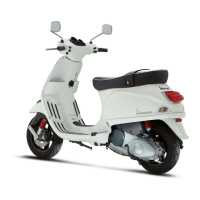
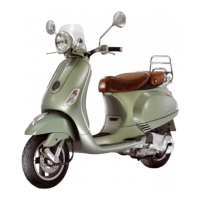


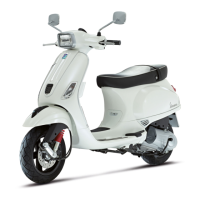



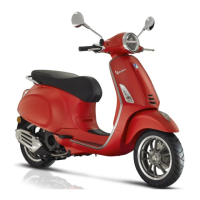


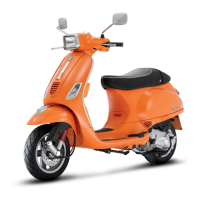
